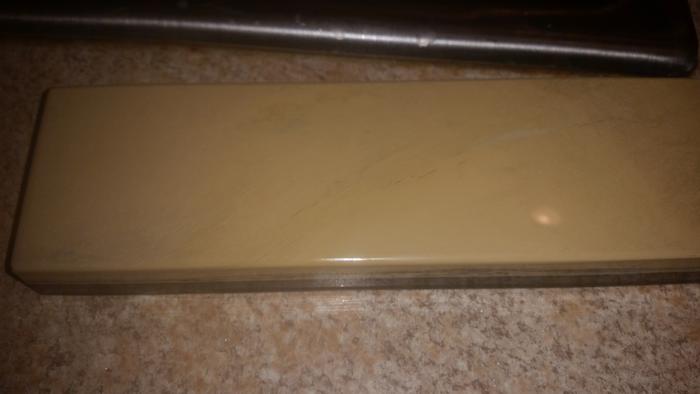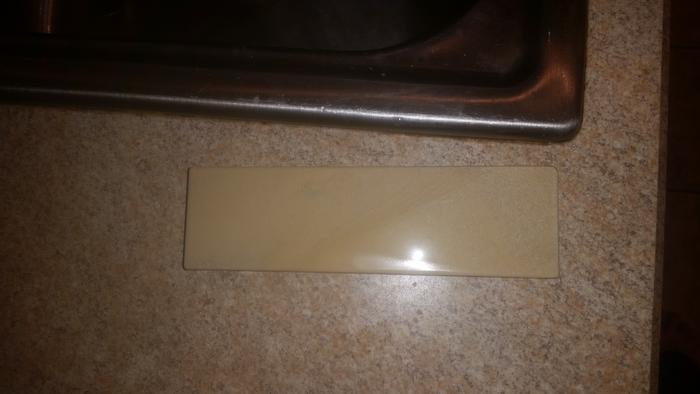Results 21 to 30 of 63
Thread: Coticule driving me to drink!
Threaded View
-
01-04-2017, 05:47 PM #1Senior Member



- Join Date
- Dec 2014
- Location
- Virginia, USA
- Posts
- 2,224
Thanked: 481 Coticule driving me to drink!
Coticule driving me to drink!
Ok, if we're being honest it's not the coticule. I'd be drinking even if it worked without a hitch. But this thing certainly is giving me the run around:


Cotilcule is standard grade, 175 x 50 mm. So I picked out a Torrey straight as the test razor, honed it up on the Norton 4k/8k. Might not have been the best choice since it was an abused ebay find thats already worn down to 4/8, maybe less. First run on plain water, then shave lather, and the shave was a failure. But in the coticule's defense I was in such a rush to test the new hone that I missed some burrs on the edge.
No big deal, wore the burrs away on a Soft Arkie and reset the bevel on the coticule with slurry. That's half the fun of these hones right? Right! Bevel set rather nicely, diluted my way to pure water. Washed the hone and did some finishing strokes on just water, then shave lather. Shave test was a failure, tugging/pulling. Not comfortable.
Set it aside a few days, picked it up again last night. Close examination under 30x and 60x. No burrs, chips, anything else suspicious. Can't see where the planes meet when looking straight down at the edge. So that puppy should be set.
Slurried up the stone (I've been using the rubbing stone that came with it, similar piece of coticule) and went at it like setting the bevel again anyway. Just in case it wasn't set. Same process, same negative shave test.
Tonight I plan to hone the Torrey on my Norton set. If it still can't shave then the razor is the issue. If it can, then hopefully the razor and coticule just don't like each other. I've got another razor in better condition that I'll hone on the Norton 4/8 as well. Once I get it shaving off the Norton 8k, I'm going to try the coticule with it.
If the coticule wrecks that shaving edge I'm not sure where to go from there. I already lapped it flat with a worn diamond plate, then sanded the scratches out to about 1k. Aside from that the only thing the surface of that hone has seen is water, the coticule rubbing stone, a razor blade, and some shave lather. I could try burnishing it, but this stone releases slurry pretty easily so I don't have high hopes for success there.
With a milky slurry it takes 20 laps to change the slurry to a gray color. With just water I haven't really been able to see much in the way of slurry/swarf form. It does seem to cut fairly fast by my standards, but I'm used to extra slow naturals like the PHIG and Arkanstones. Under a loupe the polish looks less than 8k level, but maybe I'm just not spending enough time at that final stage? Could be over-estimating the speed of a coticule and assuming I'm done too early...?


 72Likes
72Likes LinkBack URL
LinkBack URL About LinkBacks
About LinkBacks






 Reply With Quote
Reply With Quote